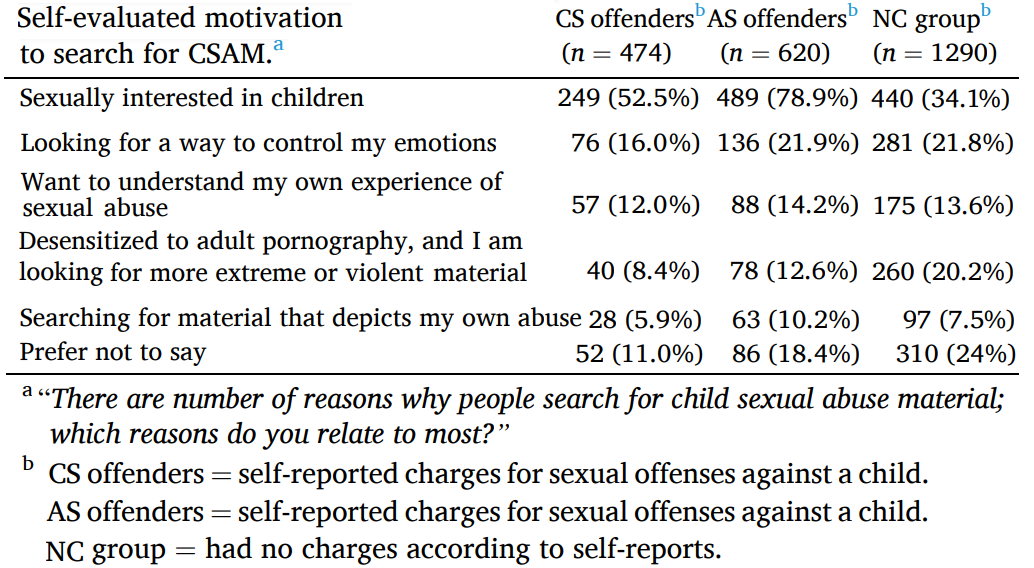Title: Investigating the Disparities Among Child Sexual Abuse Material Users: Anonymous Self-Reports from Both Charged and Uncharged Individuals.
Authors: Lahtinen, Hanna-Mari, Kirsi Honkalampi, Tegan Insoll, Juha Nurmi, Ethel Quayle, Anna Ovaska, and Nina Vaaranen-Valkonen.
Venue: Child Abuse & Neglect (2025). https://doi.org/10.1016/j.chiabu.2025.107299
Abstract:
Background: The dark web has become a more prevalent platform for the distribution of child sexual abuse material (CSAM). Most CSAM users remain undetected by law enforcement, and little is known about the population not convicted.
Objective: The aim of the study was to contribute to the research on CSAM users by investigating the differences between CSAM users who self-report having been charged for sexual offenses against a child or an adult and those who self-report not having been charged of such offenses.
Participants and setting: We analyzed anonymous survey data from 2384 respondents who sought CSAM on the dark web. Most of the respondents were young males (18–34-year-olds) searching for material depicting girls. The sample was divided into three groups: 1) those who admitted to having been charged for sexual offenses against children (CS offenders, n = 474); 2) those who admitted to having been charged for sexual offenses against adults (AS offenders, n = 620); and 3) those who admitted to no charges (NC group, n = 1290).
Methods: We used multinomial logistic regression analysis to analyze differences in self-reported behavior and motivation to access CSAM between the three groups.
Results: Those who had a previous history of violent offenses, had groomed children online, had physical contact with children, and searched for material depicting infants and toddlers were significantly more likely to belong to the CS or AS offenders group.
Conclusions: We found significant differences between the groups in their individual, motivational, and behavioral characteristics that have important implications for investigating sexual crimes and assessing and treating sexual offenders.

